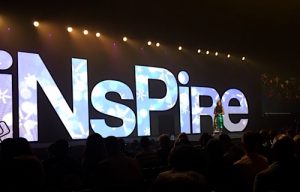The Future of Associations is Now
Association Adviser recently sat down with Naylor Association Solutions President & CEO Alex DeBarr to talk about what the future looks like for associations, how leadership and innovation go hand in hand, and why the right tools of engagement are key to engaging members and driving non-dues revenue.
Association Adviser: What does the future look like for associations?

DeBarr: The future for associations is very bright, especially for those that are willing to take calculated risks and capitalize on opportunities that come their way. Associations in this day and age need to engage members by informing them, educating them and proving their value through exclusive access and benefits — and this will only keep growing in importance. The associations that do this well will succeed. Associations that lead their industries through content and education also will see the creation of new ways to monetize that engagement, which will more easily allow them to fulfill their mission and make investments in the future.
By exploring solutions and customizing and monetizing the tools available, associations can better interact with their members, sponsors, industry leaders and supporters. We talk to associations all of the time about how to best leverage the tools of engagement they have at their disposal.

AA: What do you mean by “tools of engagement”?
DeBarr: Tools of engagement are the vehicles associations use to communicate and engage with members. Such tools could include a print magazine, digital media, social media, events or a career center. They also could include a best-in-class data management system or learning software. Each of these tools can be used by an association to effectively engage members. The key is knowing which tools will strengthen an association’s relationship with its members, and then customizing and integrating those tools so they work together to maximize their potential.
Above all, though, is a good, clean membership list. Associations get excited about solutions and new technology, but these products have to reach the right people to be effective. A lot of time and energy goes into making these tools work for associations, but if the list isn’t good, it’s all for nothing. Clean up that data first, and make sure you’re reaching the right people.
AA: How does member engagement and non-dues revenue go hand-in-hand in helping associations achieve their goals?
DeBarr: If you’re doing an effective job of communicating and engaging with your members across multiple platforms, that itself will organically attract multiple advertisers, sponsors and other revenue generating opportunities. Whether it’s a career center that generates job postings or advertising that appears in your magazine, if the product is done well, it will
create value and non-dues revenue opportunities for an association and its members. What Naylor has learned in its nearly 50 years of working exclusively with associations is that the connective tissue between all of our solutions is the role they play in creating revenue. It’s a skill that most associations don’t have enough of on their own.
AA: Associations often have a wealth of valuable content to share, but how can they better use that content to fulfill their mission and dive revenue?
DeBarr: It comes down to having a thorough knowledge of what content you have within your reach. Many associations are in need of an audit to help them determine all of the content they have at hand and the tools available to effectively distribute that content. But even more important than that, it’s essential to understand what content the members in your industry need and want. Above all, members must find value in your content. Industries change, generations change, everything changes — and the content an association provides will need to adapt to that change. An association that regularly asks its members about their content needs and wants will be in a better position to craft an overall effective content strategy.
AA: How do associations create a culture of innovation and help their members stay ahead of the fast pace of changing technology?
DeBarr: Associations don’t have a common culture. What it really comes down to is who is leading the organization. The primary driver of an association’s culture is the leadership. There are
outstanding executives in the association space who have the right mix of leadership, vision and curiosity about how to continually find ways to innovate and do things better for their markets
— and know how to do so in commercially successful and competitive ways. Those are the leaders who are the most successful. They create an atmosphere where ideas and creativity thrive, but
they have the pragmatism to expect specific and measurable results.
In my view, good leadership includes a willingness to understand what you do well and what you don’t do well — and a willingness to seek out the right help when and where it’s needed.

AA: One of the biggest hurdles many industries are facing is an upcoming talent shortage. What role can associations play in career and workforce development?
DeBarr: Professional development and career opportunities still are among the top reasons people join associations. That means associations should be at the forefront of finding talent and promoting career opportunities for their members and member companies. Through career centers and job boards, associations can be part of the conversation that exists within the marketplace about how to best match talent to opportunities within their industry. Member companies have positions they need to fill with skilled, qualified workers. An association career center is a specialized tool for pushing out professional content and job postings to the talent most likely to fill those positions. Career centers can also generate revenue that can be invested back
into association.
The simple fact is the entire workforce is dealing with a new generation of employees. Millennials now make up a third of the workforce. Millennials are going to do great things across industries and within associations, but it is tough to break through to them. Getting millennials interested in a position isn’t as simple as posting a job; associations and companies have to help them understand where that job could lead and what their career could become. You have to show them what the future could be and how you will help them get there.
AA: The theme for the 2017 ASAE Annual Meeting is “What Inspires.” What inspires you most when working with Naylor’s association partners?

DeBarr: What inspires me is the opportunity to make a difference. Associations are vital, unique and exciting organizations that do so much good within their industries and the world, but they often need good partners to help them maximize their engagement with members and to create non-dues revenue opportunities. What we’ve seen in the last few years is a greater awareness by associations that they need help and a willingness to engage in dialogue about how Naylor can customize solutions that fit their needs. Associations are more open than ever to allowing vendors to get in there and give them a helping hand. I say it all the time: associations need us and we can help them do great things. It doesn’t get much better than that.

